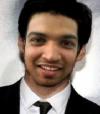Suggest Treatment For Hair Fall When On Treatment For Androgenic Alopecia

I'm a 26-year-old male. I've been on Finasteride 1mg for androgenic alopecia since July 2013. My hair has never really ceased falling out. I've always notice a lot of hair on my hands in the shower and see hair on my pillow in the morning. Further, I believe that quality of my hair has changed. It's become thinner where my hair used to be thick and curly. While taking shower recently, I've noticed more and more hair in my hands. This morning I noticed a great deal of hair on my hands. I stopped counting at about 85 hairs, but there was so much more than that. What is the likelihood that Finasteride isn't working? What alternatives are there, other than Rogaine/Minoxidil? What else can I look into? Is there a possibility that I should look into other things?
My end goal/desire is to keep my hair. At this rate, I wonder if I'll shift an entire spot on the Norwood scale by the time I'm 27.
Finasteride and hair loss
Detailed Answer:
Hello and welcome to healthcaremagic
I am Dr. Kakkar. I have gone through your query and I have understood it.
Finasteride is the only drug approved by US FDA for androgenetic alopecia/male pattern hair loss. It works by inhibiting the enzyme 5 alpha reductase present in hair follicles. This enzyme converts circulating testosterone into Dihydrotestosterone which is the main culprit behind miniaturization of hair (noticed as hair becoming finer). The inhibition of this enzyme is critical in preventing further miniaturization.
The response to finasteride might vary from individual to individual and most patients (but not all) do notice a slow down of hair fall and even regrown new hair at 1 year [http://www.nature.com/jidsp/journal/v8/n1/full/0000a.html]. The effects improve further at 2 years.
The aim of therapy with finasteride is basically to preserve existing hair and slow down the progression of hair loss. Any new hair that grows with this therapy is complementary.
-I would like to rule out other local causes of hair loss like dandruff. Do you have dandruff? If yes, you must also use an antidandruff lotion/shampoo daily, specifically a ketoconazole based shampoo.
Of course, there are other options apart from finasteride and minoxidil. One of the most effective options is Platelet Rich Plasma therapy. This has revolutionized the therapy of hair loss. Patients own blood is centrifuged under controlled conditions and platelet rich plasma fraction (platelets concentrated to about 8-10 lacs / ml) is separated from the centrifuged whole blood. This is then injected into the area of hair loss. The mechanism of action being growth promoting/stimulating effects of platelet derived growth factor on hair follicles.
This can be repeated every 2-3 months for a total of 3-4 times. Finasteride and minoxidil can be continued along with this.
Regards
Answered by

Get personalised answers from verified doctor in minutes across 80+ specialties



